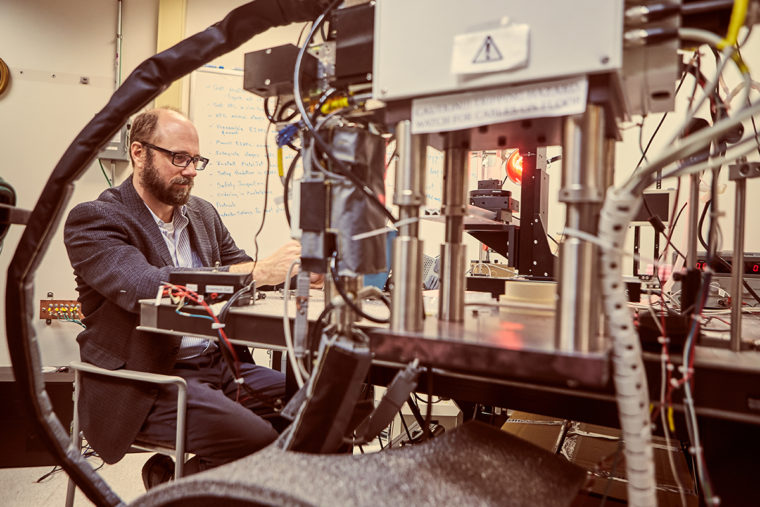The field of imaging science — marked by rapidly changing and improving technology — plays a critical role in applications ranging from cancer diagnosis to virtual reality. With the aim of training the next leaders in imaging, the School of Engineering & Applied Science is collaborating with other Washington University in St. Louis schools to offer an interdisciplinary doctoral program in imaging sciences, beginning in the 2018-19 academic year.
Designed to prepare students for careers in academic research or in industry, the interdisciplinary doctoral program will incorporate the latest imaging technologies, including biomedical, satellite, seismic, sonic and light detection and ranging (LiDAR).
More than 35 faculty experts in engineering will train students in quantitative and computational principles of image formation, analysis, understanding and quality assessment. Such faculty members represent a broad cross-section of engineering, including those from the graduate program in biomedical engineering — ranked No. 12 by U.S. News & World Report — and from electrical & systems engineering and computer science. Others involved in the program include: Arts & Sciences faculty in physics, applied math, biology and chemistry; and School of Medicine faculty in radiology, radiation oncology, and cell biology & physiology.
The doctoral program in imaging sciences — one of only two in the country – is part of a $25 million initiative recently launched by the School of Engineering & Applied Science and the School of Medicine, one of the highest ranked in the country. The initiative supports university researchers developing innovative imaging technologies aimed at transforming clinical research and the practice of medicine around the world.
Washington University has been a leader in the technology and advancement of imaging science for more than 125 years. In the 1920s, university researchers were the first to use X-rays to view the gallbladder. In the 1970s, research by Michel Ter-Pogossian at the Mallinckrodt Institute of Radiology led to the development of the PET scanner.
The new program’s director is Mark Anastasio, an internationally recognized expert on tomographic image reconstruction, imaging physics and development of novel computed biomedical imaging systems.
“Imaging science is an incredible strength at WashU,” said Anastasio, who also is a professor of biomedical engineering. “The environment here is fertile for setting up this kind of PhD program because of the university’s long history of research and advances in imaging science. It’s a natural place to set up a PhD program, and it’s natural for us to take leadership on this.”
Imaging science is much like the field of computer science 60 years ago before it became its own academic discipline, Anastasio said.
“Imaging technology is booming, and now we are in an artificial intelligence revolution where machine learning is taking over and everything is becoming ‘smart,’” Anastasio said. “Artificial intelligence revolution is definitely impacting the medical imaging field. We hope that this program will embrace this new AI technology and will change the way images are used and formed.”
“This interdisciplinary PhD program highlights the flexibility of WashU’s engineering school to pursue research that does not respect the boundaries of traditional domains,” said Aaron F. Bobick, dean of the School of Engineering & Applied Science and the James M. McKelvey Professor.
“The degree promotes seamless collaboration across multiple engineering departments, in this case leveraging our great strengths in the various facets of imaging. And with participation by world-leading imaging faculty from the School of Medicine, it represents an unparalleled opportunity for students who wish to push forward both the science and technology of imaging.”
Candidates for the doctoral program will have an undergraduate or master’s degree in engineering, mathematics, computer science, physics or another quantitative discipline. Students will be required to complete 72 credit hours, which includes a minimum of 37 hours of course credits and a minimum of 24 hours of doctoral dissertation research. Students must also complete at least one research rotation and become integrated into a research group in an Engineering department, among other requirements.
In addition, students may obtain a certificate in medical physics with additional coursework.
For more information or to apply, visit engineering.wustl.edu/imagingscience.
